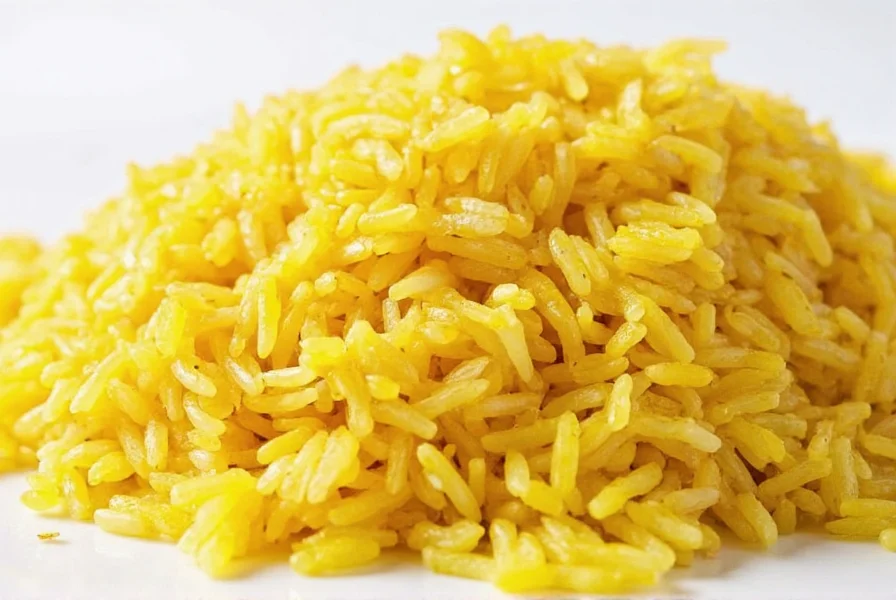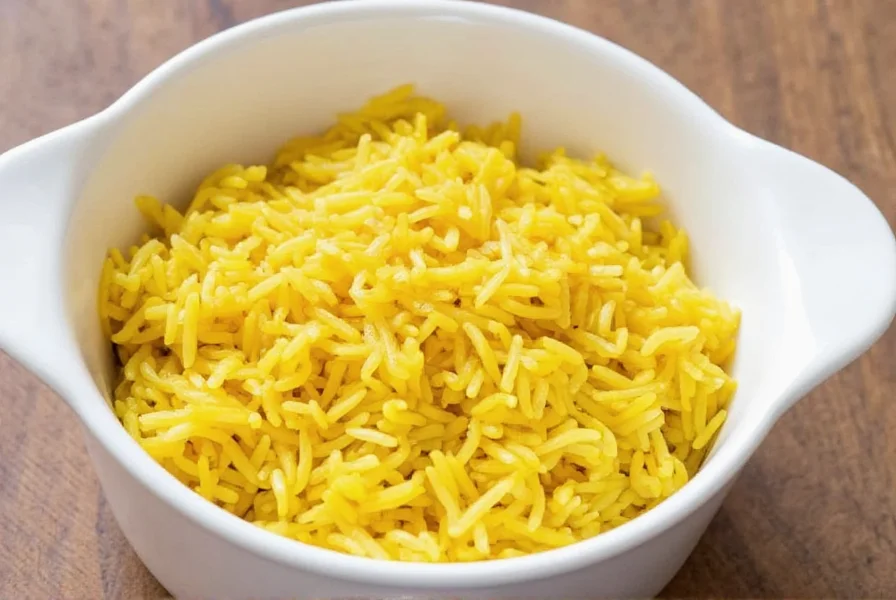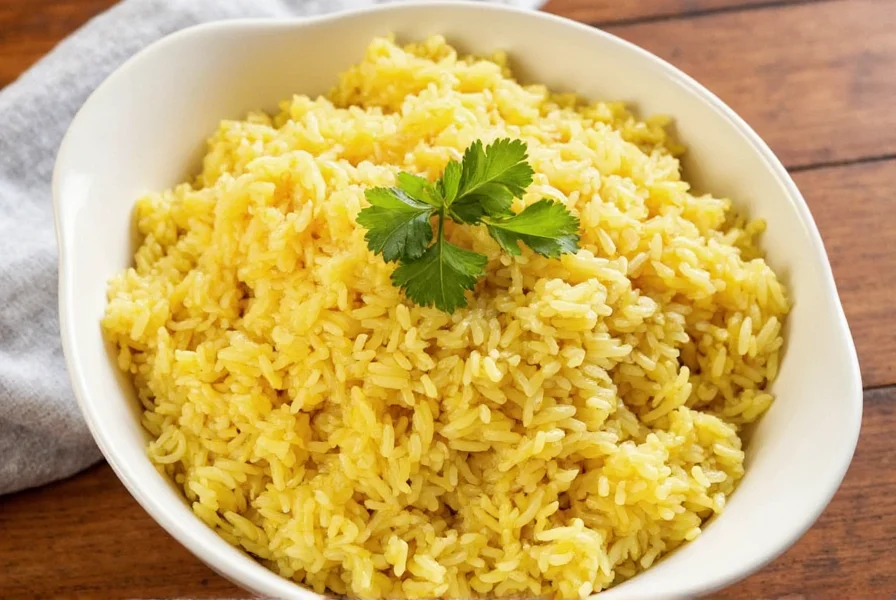Saffron basmati rice represents the pinnacle of aromatic rice preparation, blending two prized ingredients with centuries of culinary tradition. This distinctive dish isn't merely rice with added saffron—it's a carefully balanced union where each component enhances the other's qualities. Authentic saffron basmati rice features elongated, non-sticky grains with a subtle floral fragrance and a rich golden hue that comes from properly infused saffron rather than artificial coloring.
The Distinctive Qualities of Saffron Basmati Rice
True saffron basmati rice begins with aged basmati grains, typically harvested and stored for 1-2 years to develop their characteristic nutty flavor and elongation properties. When combined with genuine saffron—the world's most expensive spice derived from Crocus sativus stigmas—the result is a dish with complex flavor notes that regular basmati rice alone cannot achieve.
The magic happens during preparation. High-quality saffron threads release their color and flavor compounds (crocin and picrocrocin) when properly hydrated, transforming the rice water into a golden infusion. This process requires patience—rushing saffron preparation leads to uneven color distribution and diminished flavor. Many commercial "saffron rice" products use artificial coloring and saffron substitutes, lacking the nuanced flavor profile of authentic preparation.
| Characteristic | Authentic Saffron Basmati | Imitation Saffron Rice |
|---|---|---|
| Color | Rich golden yellow (varies with saffron quality) | Bright, uniform yellow (often artificial) |
| Aroma | Floral, honey-like with subtle earthiness | Artificial fragrance or no distinct scent |
| Taste | Complex floral notes with slight bitterness | One-dimensional, often overly sweet |
| Grain Texture | Firm, separate, non-sticky | Often mushy or unevenly cooked |
Nutritional Benefits and Health Properties
Saffron basmati rice offers more than exceptional flavor—it provides notable nutritional advantages over standard white rice. The addition of saffron introduces potent antioxidants like crocin and safranal, which research suggests may support mood regulation and cognitive function. A 2022 study published in the Journal of Food Science and Technology confirmed saffron's anti-inflammatory properties when consumed in culinary quantities.
Compared to regular basmati rice, saffron-infused versions maintain similar carbohydrate content but gain valuable micronutrients from the saffron infusion. Each serving provides:
- Vitamin B6 from both rice and saffron
- Manganese for bone health
- Antioxidants that combat oxidative stress
- Low fat content with zero cholesterol
When prepared using traditional methods with minimal added fats, saffron basmati rice becomes a nutrient-dense carbohydrate option suitable for balanced diets. The key to maximizing these benefits lies in proper preparation technique—overcooking destroys delicate saffron compounds, while insufficient infusion fails to extract maximum nutritional value.
Mastering the Perfect Saffron Basmati Rice Preparation
Creating exceptional saffron basmati rice requires understanding both ingredients' properties. The critical factor many home cooks miss is saffron preparation—simply adding threads to cooking rice yields disappointing results. Follow this professional technique for optimal flavor and color extraction:
- Measure 15-20 high-quality saffron threads per cup of uncooked rice
- Grind threads gently with a mortar and pestle
- Add to 2 tablespoons warm (not boiling) water or milk
- Cover and steep for 20-30 minutes at room temperature
- Meanwhile, rinse basmati rice until water runs clear
- Soak rinsed rice for 20 minutes, then drain
- Combine saffron infusion with rice and cooking liquid
- Cook using absorption method with precise water ratio (1:1.5 rice to liquid)

Avoid common mistakes like using boiling water for saffron (which degrades compounds), adding saffron too late in cooking, or using insufficient soaking time. The ideal saffron-to-rice ratio creates subtle floral notes without overwhelming bitterness—adjust based on saffron quality, as premium Iranian saffron requires less than Spanish or Indian varieties.
Culinary Applications and Pairing Suggestions
Saffron basmati rice serves as both a standalone dish and a sophisticated accompaniment. In Persian cuisine, it forms the base for tahdig (crispy bottom layer) preparations, while Indian chefs use it to complement rich curries without competing flavors. The delicate floral notes pair exceptionally well with:
- Grilled poultry and seafood
- Creamy mushroom dishes
- Mildly spiced vegetable curries
- Lemon-herb roasted vegetables
For traditional preparations, consider adding a few cardamom pods or a cinnamon stick during cooking—these warm spices complement rather than overpower saffron's delicate profile. Avoid strong spices like cumin or turmeric that would mask saffron's subtle characteristics. When serving, garnish with additional saffron threads for visual appeal and intensified aroma.
Storage and Shelf Life Considerations
Proper storage maintains saffron basmati rice's quality. Cooked rice keeps well refrigerated for 3-4 days in airtight containers, though the vibrant color may fade slightly. For longer storage, freeze portions in flat containers for up to two months—thaw overnight in the refrigerator before reheating.
When storing uncooked saffron-infused rice blends, keep in opaque containers away from light and moisture. Saffron's compounds degrade when exposed to air, so consume within 6 months for optimal flavor. Never store saffron rice near strong-smelling foods, as the delicate grains readily absorb surrounding odors.
Reheating requires care—add a teaspoon of water per cup of rice and warm gently over low heat. Microwave reheating often creates uneven results, making some grains mushy while others remain hard. The traditional Persian method of reheating in a covered pan with a damp cloth between lid and rice preserves texture beautifully.
Troubleshooting Common Preparation Issues
Even experienced cooks encounter challenges with saffron basmati rice. Here's how to address frequent problems:
- Uneven color: Indicates improper saffron infusion. Always steep saffron in liquid before adding to rice.
- Bitter taste: Usually from excessive saffron or boiling water extraction. Use recommended ratios and warm (not hot) liquid.
- Sticky grains: Results from insufficient rinsing or incorrect water ratio. Rinse until water runs clear and maintain precise liquid measurements.
- Faded color: Caused by light exposure or overcooking. Store properly and avoid extended cooking times.
- Weak saffron flavor: Often from poor quality saffron or inadequate steeping time. Use premium threads and allow full 30-minute infusion.

Authenticity Verification Techniques
Distinguishing genuine saffron basmati rice from imitations requires attention to sensory details. Authentic preparations show:
- Gradual color release when saffron steeps (not immediate)
- Distinct floral aroma with subtle hay-like notes
- Slight bitterness balanced by honey-like sweetness
- Color that intensifies when exposed to light (photochromic effect)
A simple authenticity test: Place a few threads in warm water. Genuine saffron releases color gradually over 15-20 minutes, while artificial coloring bleeds immediately. The water should turn golden yellow, not bright orange or red. When purchasing pre-made saffron rice blends, check ingredient lists for "saffron" rather than "saffron extract" or artificial colors.
Frequently Asked Questions
What's the proper saffron-to-rice ratio for authentic saffron basmati rice?
Use 15-20 high-quality saffron threads per cup of uncooked basmati rice. Premium Iranian saffron may require slightly less (12-15 threads) while Spanish varieties might need 20-25. Always grind threads and steep in warm liquid for 20-30 minutes before adding to rice for optimal color and flavor extraction.
Why does my saffron basmati rice turn out sticky despite following recipes?
Sticky saffron basmati rice typically results from insufficient rinsing or incorrect water ratios. Rinse basmati rice thoroughly until the water runs completely clear—this removes excess surface starch. Use a precise 1:1.5 ratio of rice to liquid (including saffron infusion), and avoid stirring during cooking. Soaking rice for 20 minutes before cooking also helps achieve separate grains.
How can I tell if saffron basmati rice contains real saffron?
Authentic saffron basmati rice shows gradual color release when prepared—genuine saffron takes 15-20 minutes to fully infuse liquid, while artificial coloring bleeds immediately. Real saffron provides complex floral notes with subtle bitterness, not a one-dimensional yellow color. Check that the ingredient list specifies 'saffron threads' rather than 'saffron extract' or artificial colors.
Can I substitute turmeric for saffron in basmati rice recipes?
While turmeric provides yellow color, it cannot replicate saffron's distinctive flavor profile. Turmeric creates a different taste and lacks saffron's floral notes and subtle bitterness. For authentic saffron basmati rice, real saffron is essential. If cost is prohibitive, consider using half saffron with a pinch of turmeric for color enhancement, but never as a complete substitute.











 浙公网安备
33010002000092号
浙公网安备
33010002000092号 浙B2-20120091-4
浙B2-20120091-4